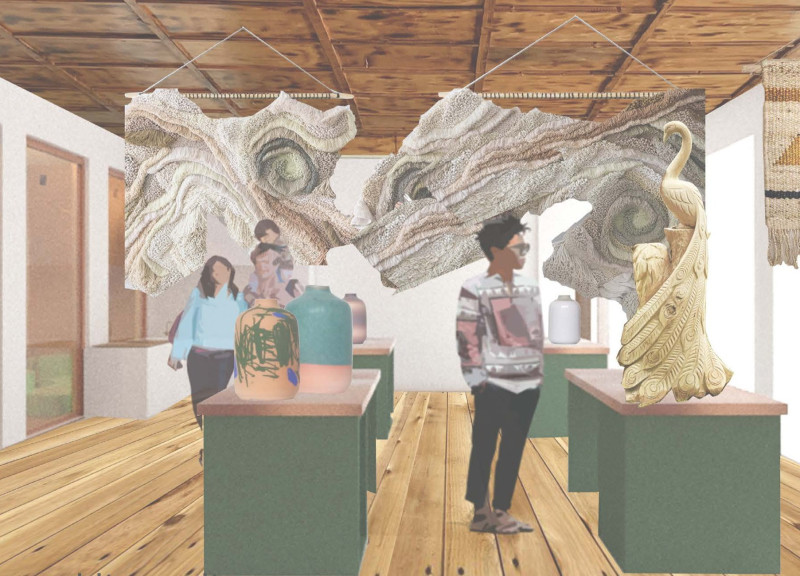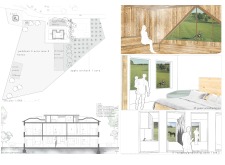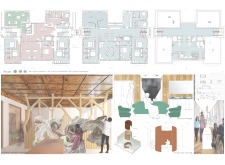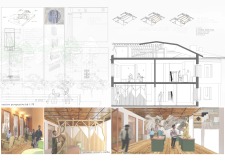5 key facts about this project
Geared towards promoting interaction and engagement, the building features distinct areas dedicated to exhibitions, artist studios, and gathering spaces. The spatial organization allows for flexible use, supporting events that range from exhibitions to workshops. This adaptability is essential for inviting broader community participation and sustaining ongoing relevance.
Distinct Design Approaches
The design of the Omuli Arts and Museum of Horse incorporates sustainable practices and local materiality to create a strong connection to its environment. The building uses pine wood extensively in structural elements and interior finishes, promoting warmth and resonance with the surrounding landscape. Incorporating cork for specific installations enhances acoustics while affirming a commitment to eco-friendly practices. Recycled silicone is featured in spaces such as the sauna lounge, showcasing innovative material use.
Furthermore, significant attention is given to natural light. Large windows optimize sunlight throughout the building, minimizing energy consumption and enhancing occupant experiences. The architectural theme integrates local vernacular elements, including gabled roofs and extensive overhangs, balancing aesthetic appeal with functional climate management.
Environmental integration is also emphasized through the incorporation of green spaces, such as apple orchards and horse paddocks, creating opportunities for educational programming intertwined with the natural world. This approach highlights the significance of sustainability and exemplifies how architecture can contribute to environmental stewardship.
Multi-Functional Spaces
The Omuli Arts and Museum of Horse is characterized by its multifunctional layout, which includes diverse spaces for art creation, exhibition, and community engagement. The museum area will host rotating exhibits and programming aimed at educating the public about equestrian history and culture. Artist studios are designed to accommodate local creators, fostering collaboration and allowing for the evolution of artistic practices.
These spaces are interconnected, promoting fluid movement and interaction among visitors, artists, and exhibits. The project’s emphasis on flexible design ensures that it can adapt to changing community needs, making it a relevant and active participant in Omuli’s cultural life.
For further exploration of the architectural plans, sections, and unique design ideas of the Omuli Arts and Museum of Horse, readers are encouraged to review the project presentation to gain deeper insights into its innovative approach.


























